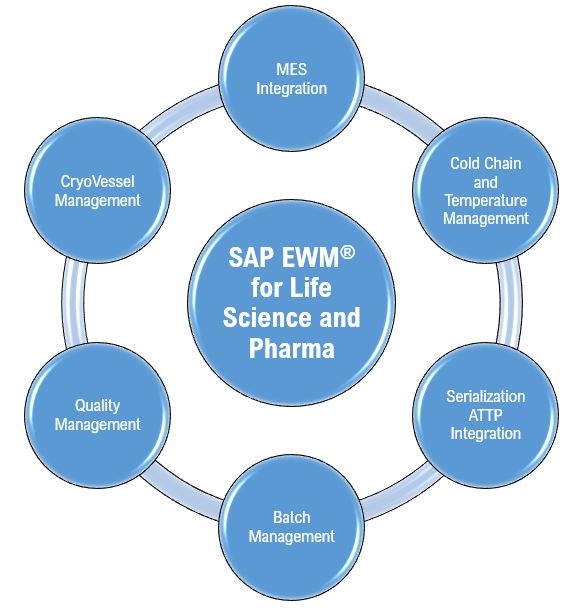Abstract
This study evaluates the adaptability of five prominent large language models (LLMs) when confronted with technical information beyond their knowledge cutoff dates. By testing GPT-4o, Gemini 2.0 Flash, Claude 3.7 Sonnet, Grok 3, and GPT-4’s ability to generate code featuring Angular 19-specific features released in November 2024, we explore how these AI systems respond to requests for information absent from their training corpus. This research provides insights into LLMs’ contextual learning capabilities and their potential to adapt to evolving technical frameworks despite temporal knowledge limitations.
Introduction
Large language models have become indispensable tools for software development, offering code generation capabilities that enhance programmer productivity. However, these models operate within defined knowledge boundaries, with each having a specific cutoff date beyond which their training data does not extend. This limitation creates an interesting test case: how do these systems respond when asked to generate code for framework versions released after their knowledge cutoff?
This study examines the performance of GPT-4o (available through ChatGPT), Gemini 2.0 Flash, Claude 3.7 Sonnet, Grok 3, and GPT-4 (available through Bing Copilot) when tasked with generating Angular 19 code—a framework version released on November 19, 2024, which falls outside the documented knowledge boundaries of all tested models.
Methodology
Test Subjects
We evaluated five leading LLMs, each with its respective knowledge cutoff date:
|
Model |
Platform |
Context Window |
Knowledge Cutoff Date |
|
GPT-4o |
ChatGPT |
128,000 tokens |
October 2023 |
|
Gemini 2.0 Flash |
Gemini |
100,000 tokens |
August 2024 |
|
Claude 3.7 Sonnet |
Claude |
200,000 tokens |
October 2024 |
|
Grok 3 |
Grok |
1,000,000 tokens |
November 17, 2024 |
|
GPT-4 |
Bing Copilot |
128,000 tokens |
October 2023 |
Testing Framework
We focused on three specific Angular 19 features introduced after the knowledge cutoff dates of the tested models:
- Angular: Material time-picker component
- Custom: theme implementation using the mat.theme mixin
- Local: variables within Angular templates
For each feature, we delivered three progressively detailed prompts:
- Basic prompt: requesting the feature without specific hints
- Hint-driven prompt: providing minimal details about the feature
- Documentation-driven prompt: including comprehensive documentation for the feature
Additionally, we tested each model’s contextual learning capability by issuing the same sequence of prompts multiple times. We observed that the models do not use web search to get the latest features available in the framework.
Evaluation Criteria
The models’ responses were evaluated based on their ability to correctly implement the requested features according to Angular 19 specifications. For each feature, we defined specific expected implementation patterns that would reflect an understanding of the latest framework version.
Results
Feature 1: Angular Material Time-Picker Component
When prompted to generate code for a time-picker component, we observed a pattern across all models. Initially, all models defaulted to using HTML’s native time input (type=”time”) rather than the Angular Material-specific component.
|
Model |
Prompt only |
Prompt + Hint |
Prompt + Hint + Documentations |
|
GPT-4o |
Incorrect |
Correct |
Correct |
|
Gemini 2.0 Flash |
Incorrect |
Incorrect |
Correct |
|
Claude 3.7 Sonnet |
Incorrect |
Incorrect |
Correct |
|
Grok 3 |
Incorrect |
Incorrect |
Correct |
|
GPT-4 |
Incorrect |
Correct |
Correct |
Feature 2: Custom Theme Using mat.theme Mixin
For the theming feature, all models initially used the outdated mat.all-component-themes approach rather than Angular 19’s mat.theme mixin when provided with minimal information.
|
Model |
Prompt only |
Prompt + Hint |
Prompt + Hint + Documentations |
|
GPT-4o |
Incorrect |
Incorrect |
Correct |
|
Gemini 2.0 Flash |
Incorrect |
Incorrect |
Correct |
|
Claude 3.7 Sonnet |
Incorrect |
Incorrect |
Correct |
|
Grok 3 |
Incorrect |
Incorrect |
Correct |
|
GPT-4 |
Incorrect |
Incorrect |
Correct |
Feature 3: Local Variables in Templates
The local template variables
feature revealed varied approaches across models. Initially, all models
attempted workarounds using established Angular patterns like ng-template, ng-container, or component properties instead of the new local
template variables syntax.
|
Model |
Prompt only |
Prompt + Hint |
Prompt + Hint + Documentations |
|
GPT-4o |
Incorrect |
Incorrect |
Correct |
|
Gemini 2.0 Flash |
Incorrect |
Incorrect |
Correct |
|
Claude 3.7 Sonnet |
Incorrect |
Correct |
Correct |
|
Grok 3 |
Incorrect |
Correct |
Correct |
|
GPT-4 |
Incorrect |
Incorrect |
Correct |
Observations
Adaptability Patterns
Our findings reveal several patterns in how LLMs handle requests for information beyond their knowledge cutoff:
- Documentation Dependency: All models demonstrated strong adaptability when provided with comprehensive documentation. This suggests that these systems can effectively process and apply new technical information when it is explicitly presented, despite temporal knowledge limitations.
- Conservative Defaults: In the absence of specific guidance, all platforms defaulted to established patterns within their knowledge boundaries. This reflects a conservative approach that prioritizes known, reliable implementations over speculative attempts at newer features.
- Implicit vs. Explicit Knowledge:
Most platforms required explicit mention of new features (e.g., “mat-timepicker from Angular 19”) rather than inferring their existence from a broader context (e.g., “Angular 19 component”). This highlights the challenge LLMs face in inferring the existence of specific features based solely on version numbers.
Model-Specific Observations
GPT-4o (available through ChatGPT) showed strong adaptability with documentation support but underperformed in zero-context scenarios, suggesting a tendency to rely heavily on explicit information rather than inferring capabilities from version numbers alone.
Gemini 2.0 Flash demonstrated limited performance with minimal input but responded well to detailed prompts, indicating a more conservative approach to generating code for unfamiliar frameworks.
Claude 3.7 Sonnet exhibited strong contextual reasoning capabilities, especially with history and richer prompts, but showed moderate responsiveness to hint-only prompts without documentation.
Grok 3, despite having the most recent knowledge cutoff, did not demonstrate significantly better initial performance than older models, suggesting that temporal proximity to the framework release date may be less important than the ability to process provided documentation.
GPT-4 (available through Bing Copilot) showed strong final-stage performance but struggled with minimal information, demonstrating notable improvement with context accumulation.
Implications
This study has several implications for both developers and AI system designers:
- Documentation-Driven Development:
The strong performance of all models when provided with documentation suggests that developers can still effectively use LLMs for newer technologies by providing relevant documentation alongside their requests. - Framework Version Awareness: The models’ conservative default responses suggest an opportunity to enhance version-specific awareness in code generation tasks, potentially through specialized fine-tuning on framework version differentiation.
- Knowledge Boundary Transparency:
The results underscore the importance of clearly communicating knowledge limitations to users, as models generally did not volunteer information about their uncertainty regarding post-cutoff technologies.
Conclusion
This study demonstrates that leading LLM platforms can effectively adapt to generate code for framework versions beyond their knowledge cutoff dates when provided with sufficient contextual information. While none of the tested platforms intuitively utilized Angular 19 features without guidance, all demonstrated the ability to learn and apply these features when appropriate documentation was provided.
These findings suggest that the practical utility of LLMs in software development extends beyond their formal knowledge boundaries through the mechanism of in-context learning. Developers working with cutting-edge frameworks can still leverage these platforms effectively by providing relevant documentation alongside their requests.
Future research could explore how these adaptability patterns vary across different programming languages and frameworks, as well as how they evolve as models continue to advance in their contextual learning capabilities.
References
- Angular Material Documentation. (2024). Components: Timepicker Overview. Retrieved from https://material.angular.dev/components/timepicker/overview
- Angular Material Documentation. (2024). Guide: Theming – Getting Started. Retrieved from https://material.angular.dev/guide/theming#getting-started
- Angular Documentation. (2024). Guide: Templates – Local Template Variables with @let. Retrieved from https://angular.dev/guide/templates/variables#local-template-variables-with-let








